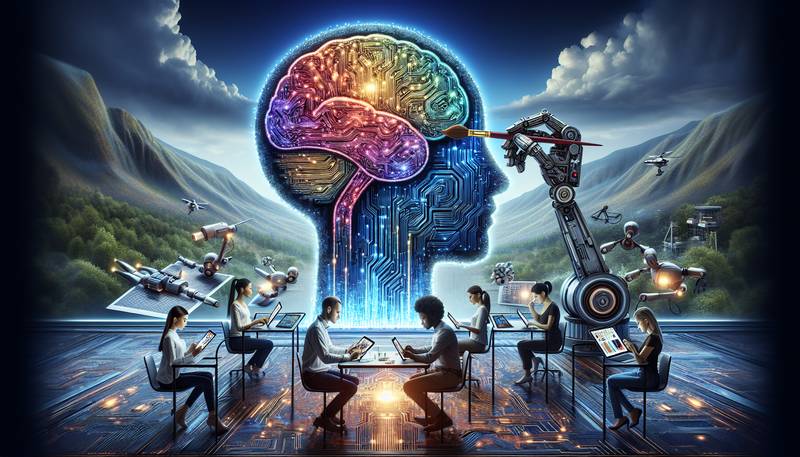The Role of AI in Creative Industries

The use of Artificial Intelligence (AI) in creative industries has been a hot topic in recent years. With the advancement of technology, AI has become more sophisticated and is now being used to enhance the creative process in various fields, including music, art, film, and design. The use of AI in these industries has the potential to revolutionize the way we create and consume art, but it also raises questions about the role of human creativity in a world where machines can produce creative work.
AI in Music
In the music industry, AI is being used to compose and produce music. AI algorithms can analyze musical patterns, styles, and structures to create new compositions. This technology has been used by artists such as David Bowie and Grimes, who have experimented with AI-generated music. Additionally, AI can be used to create personalized playlists, recommend new music, and even predict hit songs before they are released.
AI has the potential to revolutionize the way we create and consume art, but it also raises questions about the role of human creativity in a world where machines can produce creative work.
AI in Art
AI is also making its mark in the art world. Artists are using AI algorithms to generate unique and original artworks. For example, the artist Refik Anadol uses AI to create immersive installations that respond to the viewer's movements. In 2018, an AI-generated artwork sold at auction for $432,500, raising questions about the value and authenticity of art created by machines.
AI in Film
AI is being used in the film industry to assist with the scriptwriting process, editing, and special effects. AI algorithms can analyze scripts to predict box office success, and can also be used to generate realistic CGI characters and environments. In addition, AI can be used to create personalized movie recommendations and trailers tailored to individual viewer preferences.
AI in Design
In the design industry, AI is being used to create more efficient and innovative designs. AI algorithms can analyze data to suggest design solutions that are both aesthetically pleasing and functional. For example, AI can be used to create responsive and adaptive website designs, as well as optimize product design for sustainability and cost-effectiveness.
The Impact of AI on Creativity
The use of AI in creative industries raises questions about the impact of technology on human creativity. While AI can enhance the creative process, it also has the potential to replace human artists, designers, and musicians. Some argue that AI-generated art lacks the emotional depth and personal touch that only human creativity can provide. However, others believe that AI can push the boundaries of creativity and open up new possibilities for artistic expression.
The Future of AI in Creative Industries
As AI technology continues to advance, its role in creative industries is likely to grow. The use of AI in these fields has the potential to democratize the creative process, making it more accessible to those who may not have the resources or training to create art, music, or film. However, it is important to consider the ethical implications of using AI in creative industries, including questions about ownership and copyright.
Conclusion
In conclusion, the use of AI in creative industries has the potential to revolutionize the way we create and consume art. AI can enhance the creative process, and push the boundaries of what is possible in music, art, film, and design. However, it is important to consider the impact of AI on human creativity and the ethical implications of using technology in creative industries. As AI continues to evolve, it will be interesting to see how it shapes the future of creativity.


